Search results for: 7Ps of Marketing

Facebook Inc. 7Ps of marketing mix explains the role of seven important elements of the marketing mix in achieving the primary objective of the business, i.e. profit maximization. These seven elements are product, place, price, promotion, process, people and physical evidence. Product. Facebook Inc. product portfolio includes the following: Facebook. A website and mobile application that enables users to connect, share, discover, and communicate with each other on mobile devices and personal computers. Instagram. A mobile application that enables people to take photos or videos, customize them with filter effects, and share them with friends and followers in a photo feed or send them directly to friends. Messenger. A messaging application available for mobile and web on a variety of platforms and devices. WhatsApp. A fast, simple and reliable mobile messaging application that is used by people around the world and is available on a variety of mobile platforms. Oculus. Oculus virtual reality technology and content platform power products that allow people to enter a completely immersive and interactive environment to play games, consume content, and connect with others. Except Oculus virtual reality gears, all of the products offered by Facebook Inc. are intangible in nature and they are upgraded by the company in a regular basis and the use of Facebook products and services requires minimum IT skills. Place. Facebook Inc. is an e-commerce business without physical stores and physical customer service offices. An access to Facebook products and services are subject to the following three conditions: Access to a desktop computer, laptop, tablet or a smartphone Access to internet via desktop computer, laptop, tablet or a smartphone Being located in a country where Facebook is not banned. There are few countries such as China, Iran, and North Korea, where access to Facebook is restricted due to political reasons.…

Gap Inc. 7Ps of marketing consists of product, place, price, promotion, process, people and physical evidence elements of the marketing mix Product Gap Inc. portfolio comprises five distinct brands and the table below illustrates the main categories of products sold under each brand. Brand Main products GAP all things denim, tees, button-downs, and khakis, must-have trends Banana Republic clothing, eyewear, jewelry, shoes, handbags, and fragrances with detailed craftsmanship and luxurious materials Old Navy a wide range of clothing products Athlete apparel and gear for a range of activities from yoga to strength training and running, as well as seasonal sports, including skiing and tennis Intermix Clothing, shoes, bags and accessories Gap Inc. brands and respective products Products belonging to Gap Inc. portfolio are designed and positioned as ‘cool’ and ‘trendy’ and they are used by the target customer segment to express their individuality. The company offers an extensive variety of range in terms of size, colors and design. Place The retailer uses online and offline sales channels in an integrated manner. There are 3,721 company-operated and franchise store locations within Gap Inc. portfolio and most stores are open seven days a week.[1] Customers have an opportunity to find the address of the nearest store to their location from the official website of the company. Starting from recently, the company has been attempting to increase the extent of utilization of online sales channel. In a notable move, Gap’s CEO Art Peck “told shareholders that Gap is open to selling its merchandise on Amazon or other third parties in the U.S.”[2] The company also offers online shoppers to the opportunity to purchase multiple brands within its portfolio from a single website into one shopping card. Price Gap Inc. pricing strategy integrates the combination of psychological and product line pricing techniques.…
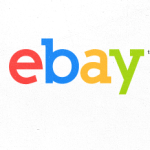
eBay 7Ps of marketing covers seven elements of the marketing mix – product, place, price, promotion, process, people and physical evidence. The company’s Advertising expense totalled USD1.0 billion, USD1.0 billion and USD844 million for the years ended December 31, 2015, 2014 and 2013, respectively[1] Product While eBay was once an auction site selling vintage items, today 80% of the items sold on eBay are new, and at any given time it has more than 800 million live listings[2] eBay services are divided into the following three platforms: Marketplace refers to an online marketplace available at ebay.com StubHub represents a platform to purchase tickets to the games, concerts and theatre shows and to sell tickets. Classifieds platforms include a collection of brands such as Mobile.de, Kijiji, Gumtree, Marktplaats, eBay Classifieds and others eBay commits to systematic investments to develop new products and services. Capitalized internal use and platform development costs were USD136 million and USD144 million in 2015 and 2014, respectively[3] Place Being an e-commerce business and an online platform, eBay services can be used from any part of the globe given the following two conditions are met: Customers have access to the internet Customers have access to PayPal and other payment methods allowed by eBay People from 190 markets buy from eBay and it has been acknowledged as Top 10 global retail brand[4] The company’s website at www.ebay.com and eBay app are the major sales channels for the business. The popularity of eBay app as sales channel has been consistently increasing and it has been downloaded more than 326 million times[5] The time of delivery of products represents a major point of competition between online stores and this also relates to the place element of the marketing mix. The time of delivery varies according to the nature of…
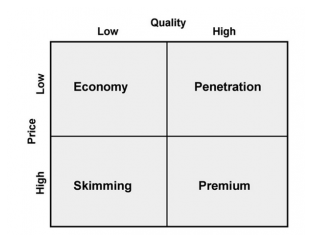
Hilton’s 7Ps of marketing comprises elements of Hilton Hotels marketing mix that consists of product, place, price, promotion, process, people and physical evidence. Product Element of Hilton Hotels Marketing Mix Hilton Hotels and Resorts can be classified as a full service hotel. Accordingly, the range of its services is extensive and includes meeting, wedding and banquet facilities and special event services, restaurants and lounges, food and beverage services, swimming pools, gift shops, retail facilities and other services. Generally, products are divided into three levels: core, facilitating and supporting products. Core products can be explained as a basic form of a product. To put it simply, core products are the main reasons for customers purchasing from a business. For Hilton Hotels & Resorts core product is hotel rooms that customers stay in for a specific period of time. Peripheral services can be explained as additional products and services above the core product that businesses offer to get competitive edge in the marketplace. Facilitating products involve services that assist consumers in consumption of core products. Hilton offers a set of popular facilitating products such as customer services, bars and restaurants, and online reservation facilities. Supporting products include additional products and services that are offered in order to obtain competitive advantage for the business by increasing the value of core products and services. A range of supporting products offered by Hilton Hotels include 24/7 room service, free newspapers and magazines for business travellers, concierge services etc. Augmented product is benefit offer made by businesses that consist of core product and peripheral services. Augmented products offered by Hilton Hotels & Resorts include membership discounts, luxurious room and exterior designs, high class restaurants and relaxed hotel atmosphere. Place Element of Hilton Hotels Marketing Mix The ultimate aim of the distribution strategy for a hotel firm can be specified as making available…
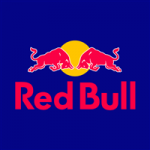
Red Bull 7Ps of marketing explains how the company deals with individual elements of the marketing mix – product, place, price, promotion, process, people and physical evidence, in order to make its products more attractive to the target customer segment. Product. Red Bull product portfolio is highly focused and is limited to the following: Red Bull Energy Drink Red Bull Sugar Free Red Bull Zero Calories Red Bull Editions: tropical, blue and orange editions Red Bull Simply Cola The company also sells brand-related accessories, apparel, media products, headwear and gift ideas from its official website. The company has a history of launching unsuccessful products on a few occasions. For example, Red Bull Cola introduced in 2008 and Red Bull energy shots introduced the 2009 struggled to excite consumers and retailers, thus had to be discontinued in 2011.[1] Place. Red Bull is sold in more than 169 countries.[2] Red Bull sells its beverages via distributors and resellers such as supermarket chains, bars and restaurants and other outlets. The company does not use online sales channels to sell its beverages. However, online sales channel is used to sell brand-related products, accessories and gift-ideas. Red Bull offers a free delivery and refund for up to 30 days for these products. Price. Red Bull pricing strategy can be classified as premium pricing. Red Bull beverages are the most expensive in the energy drink market, as the company charges additionally for the psychological consumer perception of ‘Red Bull Gives You Wings’. Various Red Bull resellers such as supermarket chains, bars and restaurants and other outlets also apply psychological pricing strategy with use of Price Point Perspective (PPP) 0.99 Cents. Moreover, Red Bull pricing strategy also integrates various patterns of promotional and geographical pricing strategies… Red Bull GmbH Report contains a detailed discussion of…
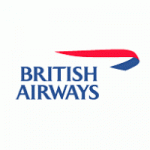
British Airways 7Ps of marketing integrates important elements of the marketing mix that need to be addressed by marketing managers taking into account taking into account the characteristics of the target customer segment. The most important elements of the marketing mix that consists of product, place, price, promotion, process, people and physical evidence. In January 2015 British Airways announced that “will split its marketing department and bring the unit closer to its commercial operations as part of a major restructure”.[1] Product. British Airways offers airline services of a premium segment. A high level of service customization and the abundance of choice is one of the core advantages of the airline’s competitive advantage. For example, in the World Traveller cabin, customers can choose from a wide range of Taste of the Far East’, ‘Gourmet Dining’, ‘Taste of Britain’, ‘Great British Breakfast’, ‘Healthy Choice’ and ‘Vegetarian Kitchen’.[2] Moreover, the airline’s service provision is associated with a high level of digitization and an extensive integration of information technology. For example, in 2015 British Airways launched its app for the Apple watch. A simple swipe opens the British Airways app, which was re-designed to fit the Apple Watch screen. It then displays a summary of the customer’s next flight, the flight number, route, departure time, flight status, a countdown to the departure time and the weather at the destination.[3] Place. British Airways flies to more than 400 destinations worldwide and it has the greatest presence in Heathrow, Gatwick and London City airports. British Airways utilizes online sales channel to sell its tickets and air tickers can also be purchased offline via sales agents and other intermediaries. The range of sales support measures offered by the airline include the possibility to hold flights and the price for up to 72 hours after the booking. Price. British…
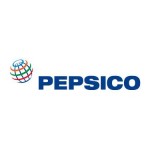
PepsiCo 7Ps of marketing comprises seven elements of the marketing mix. These are product, place, price, promotion, process, people and physical evidence. Product. PepsiCo sells a wide range of beverages, foods and snacks under 22 different brands that include Pepsi-Cola, Lay’s, Mountain Dew, Gatorade, Tropicana, Diet Pepsi, 7UP, Doritos and other internationally famous names[1]. Although, PepsiCo senior management led by Chairman and CEO Indra Nooyi does stress the direction of the strategy towards healthy products, the majority of products within PepsiCo portfolio are beverages high in sugar and food and snacks high in salt. PepsiCo products are attractively packaged with colorful designs and they are readily available in many supermarkets and grocery stores around the globe. PepsiCo product portfolio also includes brand-related accessories, drink gears and a limited range of other products related to specific brands. However, it is important to note that the sales of these accessories account for only a small fraction of the total revenues. Place. PepsiCo products are sold in more than 200 countries and territories around the world.[2] Consumers can purchase PepsiCo products from supermarkets, mini-markets and grocery stores of various formats, restaurants and fast food restaurant chains. The company increasingly focuses on fast-food chains in order to achieve a greater level of market penetration. In 2015 alone, more than 5,000 Subway locations were added to its customer portfolio across Canada, the UK, the Netherlands and India.[3] PepsiCo does not use online sales channels to sell its food, snacks and beverages. However, PepsiCo food, snacks and beverages can be purchased online from the websites of major supermarket chains along with other products. The use of online sales channels by PepsiCo is limited to brand-related accessories, drink gears and a limited range of other products related to specific brands. Price. PepsiCo pricing strategy is market-orientated and…
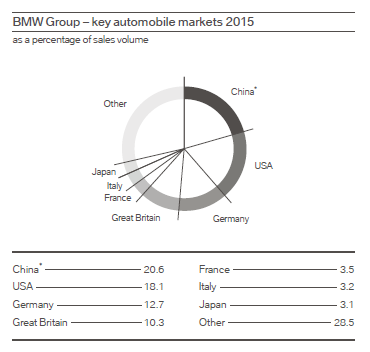
BMW’s 7Ps of marketing consists of product, place, price, promotion, process, people and physical evidence elements of the marketing mix. Product. BMW Group is engaged in development, manufacturing and the sale of engines as well as all vehicles equipped with those engines. BMW Group owns and sells its vehicles under the following three brands: BMW MINI Rolls Royce The company pursues product differentiation business strategy and maintains 13 research and development centres in five countries[1]. Vehicles produced under BMW Group brands belong to the premium segment and accordingly, they have highly efficient and reliable with advanced set of features and capabilities. BMW leads the automobile industry in electromobility and the brand is also famous for achieving a high level of integration of internet and digitalization in its vehicles. Place. BMW Group has about 6,000 dealerships and sales representatives in 150 countries globally.[2] The worldwide distribution network currently consists of around 3,310 BMW, 1,550 MINI and 140 Rolls-Royce dealerships[3] In China alone, around 60 BMW dealerships were opened in 2015[4]. The dealership and agency network for BMWi comprises about 950 locations. As it is illustrated in figure below, China, USA and Germany represent the largest automobile markets for BMW Group and accordingly, these countries accommodate the largest numbers of dealership offices and representatives. BMW Group key automobile markets (Annual Report, 2015) Price. BMW pricing strategy can be described as premium. High level of reliability of BMW Group vehicles and advanced set of features and capabilities integrated into the vehicles come for expensive prices. For example, as of April 2016, BMWi3 electric car costs more than USD 45,000 and customers have to pay more than USD 100,000 for BMW X6 model[5]. Additionally, BMW uses product line pricing strategy charging different prices for different models of its products. Geographical pricing represents another important…
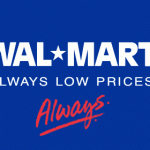
Walmart 7Ps of marketing comprises elements of the marketing mix that consists of product, place, price, promotion, process, people and physical evidence. Product. Walmart sells a wide range of products belonging to the following categories: groceries entertainment health and wellness – including pharmacy hardlines – including stationery, auto spares, and accessories hardware apparel home furnishings household appliances Despite the low prices, Walmart attempts to position its products as quality and this message is integrated into company’s marketing strategy. For example, in China Walmart utilizes “Worry Free Fresh” program to provide a money-back guarantee if its produce and meats don’t meetcustomer expectations. Wallmart.com offers about 8 million items in the US[1] and it is duly considered to be one of the largest online stores in the world. Place. With more than 11,000 stores, websites and mobile apps, customers can access Walmart via multiple channels.[2]During the fiscal year of 2016, Walmart is planned to expand by approximately 15 to 16 million total net retail square feet, representing between 240 and 270 units[3]. Walmart stores are operated in the following four formats: Walmart discount stores Walmart express stores Walmart super centers Walmart neighborhood markets Walmart has launched its dedicated e-commerce websites in 11 countries and the proportion of online sales compared to the traditional offline sales has been consistently increasing for the past 10 years. Price. Walmart has based its competitive advantage on cost leadership. Accordingly, the retailer aims to offer the lowest price possible according to its motto ‘everyday low prices’. Walmart Price Match Policy formulated on its website states the following: “We’re committed to providing low prices every day, on everything. So if you find a lower price from an online retailer on an identical, in-stock product, or the item purchased from Walmart.com is now listed at a lower price, tell us and…
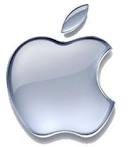
Apple marketing strategy is based on the founder Steve Jobs’s philosophy that customers do not always know what they want. Accordingly, instead of conducting marketing researches to identify customer needs and wants, the multinational technology company prefers to install innovative features and capabilities in their products, making customers to want Apple products. Under the leadership of Tim Cook since 2011 certain aspects of the business such as management style and company’s stance towards CSR have changed. However, the dismissal of marketing research remains to this day. Apple marketing strategy expresses the brand in minimalist, yet highly efficient ways. The world’s largest IT company by revenue is one of the first companies to successfully associate the brand image with being innovative, rebellious and non-conformist. Apple 7Ps of marketing is marked with a particular focus on the product element of the marketing mix and the company’s segmentation targeting and positioning initiatives are aimed at targeting users of premium products. Moreover, marketing communication mix of Apple Inc. places greater emphasis on print and media advertising and personal selling in Apple Stores and the company rarely uses sales promotions as part of its marketing strategy. Generally, Apple marketing strategy integrates the following: 1. Focusing on attractive value proposition. Apple’s value proposition is “beautiful design that works right out of the box with ever-smaller packaging”[1] The world’s largest IT company by revenue has been able to avoid price wars with competitors by emphasizing its unique value proposition in its marketing communication messages. Apple is a unique company in a way that it is a design firm, a media platform, a publishing company, a software powerhouse and a computer manufacturer – all at the same time. Such a position allows the company to communicate its value proposition to target customer segment in a cost-effective manner.…
